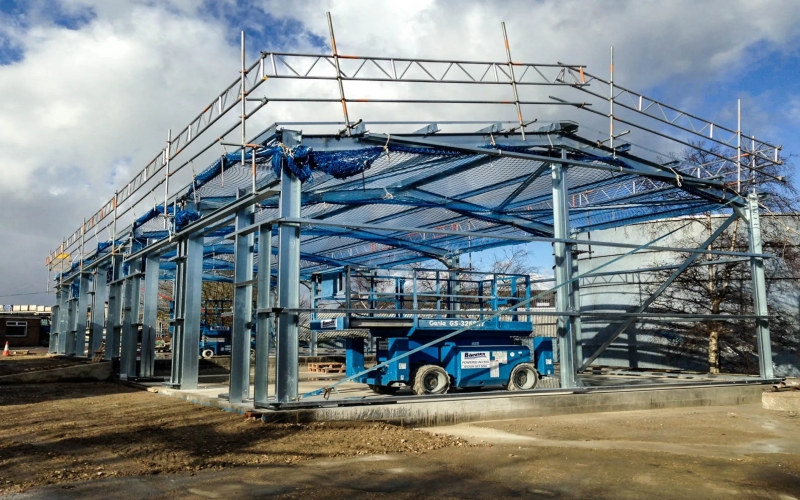Safety stands as a paramount concern when it comes to construction. As buildings evolve to meet the demands of modern living, the structural integrity of these edifices gains unprecedented significance. Prefab steel buildings emerge as stalwarts in ensuring safety, offering a multitude of advantages that bolster their structural robustness. This article delves into the realm of prefab steel buildings, whether it’s a garage, workshop or agricultural building, highlighting how their design and materials prioritize safety without compromise.
Resilience Beyond Compare
Prefabricated buildings are characterized by their innate resilience. Crafted from steel, a material known for its strength and durability, these structures are engineered to withstand the tests of time and nature. From earthquakes to strong winds, the inherent properties of steel ensure that these buildings remain steadfast in the face of adversity, safeguarding occupants and contents alike.
Engineered Precision
One of the cornerstones of safety in prefab steel buildings lies in their precise engineering. Every component is meticulously designed to fit seamlessly together, eliminating potential weak points that could compromise the building’s integrity. This precision not only enhances safety but also streamlines construction, reducing the risk of errors that could impact the final structure.
Fire Resistance
Pre-engineered buildings excel in fire resistance, a factor crucial for occupant safety. Steel, being non-combustible, offers a level of protection that traditional building materials struggle to match. This fire-resistant quality ensures that in the unfortunate event of a fire, the structural integrity of the building remains intact for an extended duration, providing occupants with valuable time to evacuate safely.
Protection from the Elements
Mother Nature’s unpredictability is a reality we must contend with. Pre-engineered buildings shine in this regard, offering inherent protection against various weather conditions. Steel’s resistance to corrosion ensures that these buildings can withstand moisture and humidity without compromising their structural stability. Whether facing heavy rain, snow, or salt-laden air, these structures stand firm, upholding safety standards even in challenging environments.
Quality Control
One of the significant advantages of prefab construction is the stringent quality control measures that come into play. Prefab steel buildings are manufactured in controlled environments, minimizing the variability that on-site construction can bring. This attention to detail ensures that the materials used are of high quality, further enhancing the safety and longevity of the structures.
A Lifeline in Earthquake Zones
For regions prone to earthquakes, safety is a paramount concern. Prefab buildings offer a unique advantage in these areas. The flexibility and strength of steel allow these structures to absorb and dissipate seismic forces, reducing the impact on the building’s overall stability. This seismic resilience can be a lifesaver in earthquake-prone regions, providing occupants with a secure haven.
Minimal Maintenance, Maximal Safety
Maintenance is an essential aspect of ensuring long-term safety. Pre-engineered buildings require minimal maintenance compared to structures made from traditional materials. The durability of steel means that these buildings are less susceptible to wear and tear, reducing the risk of structural deterioration over time. This low-maintenance attribute contributes to the long-term safety of the occupants.
The Future of Safe Construction
As construction methods evolve, prefab steel buildings stand as beacons of safety and structural integrity. Their robustness, fire resistance, and ability to withstand adverse conditions make them a wise choice for everything, whether it’s a workshop, warehouse, storage unit or agricultural building. From precise engineering to inherent resilience, these buildings exemplify a future where safety is not just a consideration but a foundation that shapes the very structure of our built environment.
Conclusion
In the pursuit of constructing spaces that prioritize safety, prefab steel buildings emerge as frontrunners. Their structural integrity, fire resistance, and ability to withstand nature’s challenges paint a picture of a secure and stable future. As the world embraces the advantages of steel in construction, it’s evident that pre-engineered steel structures offer not just buildings but sanctuaries where safety takes center stage, ensuring a secure haven for generations to come.

